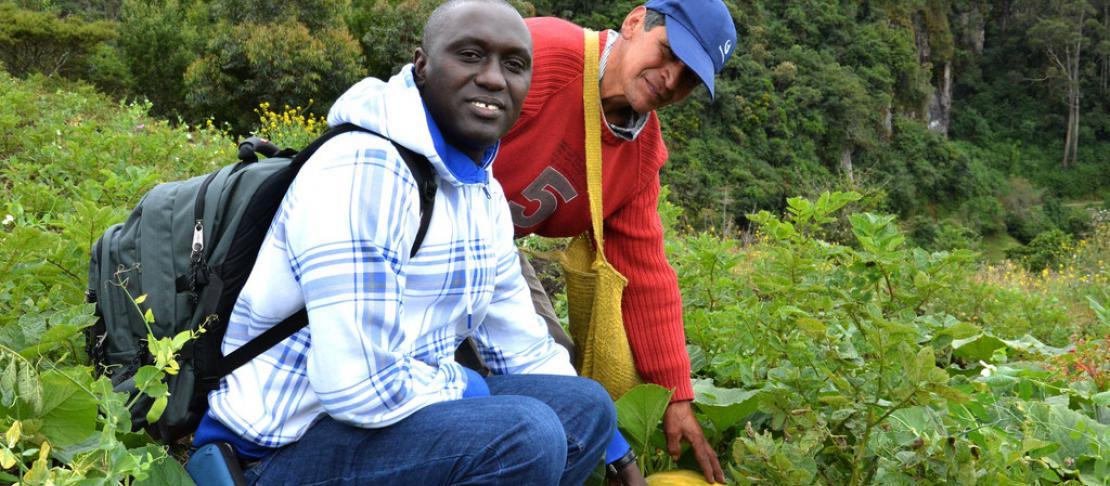Scaling up climate advisories in Senegal and Colombia

Summary
The research was implemented in collaboration with the International Center for Tropical Agriculture (CIAT) and the International Crops Research Institute for the Semi-Arid Tropics (ICRISAT).
In Senegal, CCAFS has worked closely with the National Meteorological Agency (ANACIM) to develop downscaled climate information services, and enhance the capacity of partners who are tasked to undertake longer-term analysis and communicate information to farmers. Climate information includes details regarding the amount of precipitation and timing of the rainy seasons, as well as daily and 10-day forecasts throughout the rainy season. The project has been piloted since 2011, and the scope has now been widened through a partnership with L’Union des Radios Associatives et Communautaires (URAC), a local union of community radio stations focused on promoting economic development. An estimated 560,000 rural households now have access to climate information services in Senegal. Partnering with URACS gives substantial access to local farmers, as it spans across all 14 administrative regions and operates in local languages, and utilizes an interactive format to engage listeners.
In Colombia, farmers generally experience favorable growing conditions, including reliable rainfall.. However, increasing climate variability in recent years has wreaked significant havoc on the country, in the form of both flooding and drought. To strengthen the resilience of Colombian farmers, the International Center for Tropical Agriculture (CIAT), together with national partners facilitated a South-South exchange with the Senegalese organizations. The purpose of the exchange was for Colombian partners to learn from this experience and to learn from the farmers in Senegal who have been adapting to harsh climates for millennia, and have built up a wealth of indigenous knowledge on how to cope with month droughts. Partners in Colombia included the Colombian Ministry of Agriculture (MADR), six National Growers Associations (NGAs), the National Agricultural Research System, as well as local experts and Nongovernmental Organisations. Through this cross-cutting collaboration, these actors have gained new skills and knowledge of how to incorporate climate and site-specific information into their planning systems and strategies. As a result, they are better equipped to provide agroclimatic forecasts to farmers, as well as recommendations that suit their specific contexts. By performing carbon and water footprint analyses, management practices can in turn be made more climate-smart. In Colombia alone, 154,059 farmers are now receiving agroclimatic advisories, and an additional 6,000 have adopted climate-smart practices. In the medium-term, the project is expected to reach 1,588,640 farmers.
Key facts
- South-South cooperation between Senegal and Colombia strengthens the resilience of farmers in both countries
- In Colombia, 154,059 farmers are receiving agroclimatic advisories, and 6,000 have adopted climate-smart practices
- In Senegal, partnerships with the National Meteorological Agency and local radio stations has given 560,000 rural households, or approximately 7 million people, access to climate forecasts
Lessons: key elements of success
- Learning from others has been key, facilitated by the South-South exchange
- Strategic alliances with Government, NGOs and experts helped decision makers gain contextual knowledge and enhance capacity
- Dissemination of information and recommendations was accomplished through diverse communication channels (e.g. workshops, social media, radio, etc.), based on farmer preferences
- Using an interactive format in the climate information radio broadcasts encouraged participation and engagement
Further reading
Related research outputs
- Lo HM, Dieng M. 2015. Impact assessment of communicating seasonal climate forecasts in Kaffrine, Diourbel, Louga, Thies and Fatick (Niakhar) regions in Senegal: Final Report for CCAFS West Africa Regional Program.
- Tall A, Hansen J, Jay A, Campbell B, Kinyangi J, Aggarwal PK, Zougmoré R. 2014. Scaling up climate services for farmers: Mission Possible. Learning from good practice in Africa and South Asia. CCAFS Report No. 13. Copenhagen, Denmark: CGIAR Research Program on Climate Change, Agriculture and Food Security (CCAFS).


